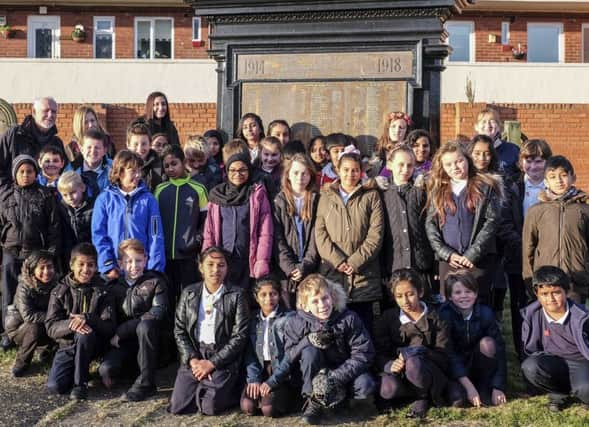South Shields youngsters learn about Tyne's past


The project involved pupils from Year 6 of Hadrian Primary School, South Shields, and their teachers, Miss Pattison and Miss Christie.
The teachers told me that they and the pupils had not only been studying the River Tyne, between 1914 and 18, and how it fared during the First World War, but also the fate of the pilot cutter Protector.
Advertisement
Hide AdAdvertisement
Hide Ad“Supported by a Heritage Lottery Fund grant, the pupils researched those killed in the conflict and buried or commemorated at St Aidan’s and St Stephen’s Church,” explained the teachers.
“They were fascinated to find that their local area had been in the front line of the conflict.”
This was poignantly brought home by the tragic loss of the Protector two years after the conflict began.
“Tragically,” continues the teachers, “on the December 31, 1916, the pilot cutter was sunk by a mine, off the North Pier of the River Tyne.
Advertisement
Hide AdAdvertisement
Hide Ad“This was probably laid by the German submarine UC-31, under the command of Otto von Schrader.
“Everyone aboard was killed including 10 pilots, four assistant pilots and five crew. The oldest was veteran pilot Robert Philips, then 70, while the youngest was cabin boy Bertram Rumney, only 15 years old.
The teachers told me that St Stephen’s was known as the Pilots’ Church and has a “glowing brass plaque” recording the loss of the Protector.
They went on to reveal that 10 First World War graves are also cared for by the Commonwealth War Graves Commission in the Memorial Garden of St Stephen’s Church.
Advertisement
Hide AdAdvertisement
Hide AdProject historians, Peter Hepplewhite and Neil Tonge, they say, are researching the servicemen for a commemoration leaflet to be published in December.
“Among those buried is Walter Hope Brown, Sapper WR/509248, Inland Water Ways and Docks division of the Royal Engineers.
“Walter was a tugboat apprentice before he was ‘called to the colours’ on November 9, 1917, aged 19.
“He stood 5ft and ½ an inch tall and had a 36 inch chest on enlistment. Because of his skilled background, Walter served as a Sapper in the Royal Engineers.
Advertisement
Hide AdAdvertisement
Hide Ad“He was posted to the British Expeditionary Force in Taranto, Italy, on January 2, 1918, where he was a crewman on a lighter, probably moving goods in Taranto harbour.
“Walter took ill in Italy and was evacuated back to Britain on October 30, 1919. Sadly he died of diphtheria and acute septicaemia in Central Hospital, Lichfield, on November 23. His next of kin was his father, also Walter, of 58 Empress Street, South Shields.”
The teachers say the children supported each small biography with their own research, giving a little context to the era.
Their research included that fact that a lighter was a type of flat bottomed barge used to carry goods and passenger. (Luca, Nabiha, Ruby and Toby) Diphtheria was deadly in Edwardian times. It is a bacterial infection that spreads quickly. It can cause swelling and paralysis of the neck and throat and stop you breathing. (Nabiya, Naziya, Sumaya and Ruby)
Advertisement
Hide AdAdvertisement
Hide Ad“The children knew that all the veterans of the First World War are now dead, but in a magical lesson they met and questioned Bill Philips and his wife Carol. Bill is the great, great grandson of Robert Philips, the senior pilot, who died on the Protector.
“He enthralled the children with family stories, including the sad and gruesome recovery of Robert’s body in St Edwards Bay, Tynemouth.”